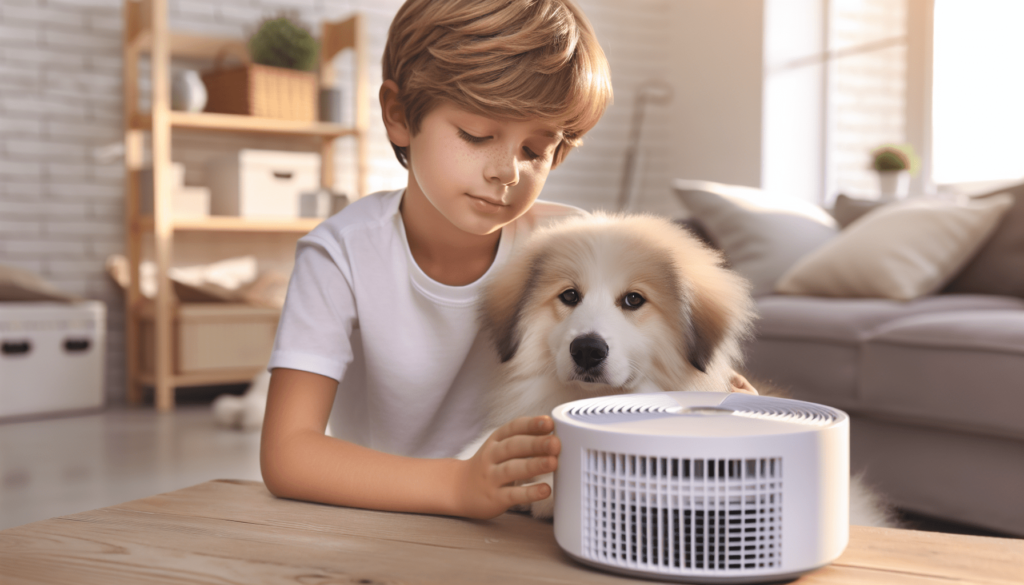Have you ever wondered how to teach children about pet allergies in a way that’s both informative and engaging? When it comes to our kids and pets, understanding allergies is essential. Pet allergies can significantly impact daily life, and informing children about them can help prevent unnecessary discomfort and health issues. Here are ten tips to make the process easier and more effective.

1. Start With Basic Education
What Are Pet Allergies?
Teaching kids the basics of what pet allergies are can be the first step toward their understanding. Essentially, pet allergies occur when the immune system reacts to proteins found in an animal’s skin cells, urine, or saliva.
Common Symptoms
Explain the common symptoms of pet allergies to make it easier for them to identify:
- Sneezing
- Runny or stuffy nose
- Itchy, watery eyes
- Skin rashes
Discuss these symptoms in simple terms, so they can easily relate and understand.
2. Make It Relatable
Personal Stories
If anyone in your family experiences pet allergies, share some personal stories. This makes the concept real and relatable. Explain the precautions you take to manage allergies at home.
Role-Playing
You can also engage children in role-playing activities. For example, simulate a situation where a child encounters a pet and exhibits allergic symptoms. This practical demonstration helps solidify their understanding of what to look out for.
3. Use Age-Appropriate Language
Simple Terms for Younger Kids
For younger children, use simpler language and concrete examples. Instead of saying “allergen,” you might say “something in the pet’s fur that makes you sneeze.”
More Detailed Explanations for Older Kids
For older children, you can delve into more complex concepts. Explain the immune system’s role and how it mistakenly identifies pet proteins as harmful, triggering allergic reactions.
4. Utilize Visual Aids
Charts and Diagrams
Visual aids can make learning about pet allergies more engaging. Use charts and diagrams that show how allergens interact with the body.
Illustrated Books and Videos
Books and videos designed to educate children about health and allergies can also be beneficial. Look for materials that are age-appropriate and visually appealing to hold their interest.
5. Set Up an Allergy-Friendly Zone
Creating Safe Spaces
Show children how to create allergy-friendly zones at home. This could be a pet-free area where they can retreat if they start feeling symptoms.
Importance of Cleanliness
Teach them the importance of cleanliness in preventing allergies. Explain how regular cleaning can reduce allergens in the home, such as vacuuming carpets and washing bedding frequently.
6. Encourage Good Hygiene Practices
Hand Washing
Explain why washing their hands after petting animals is essential. Not only does it remove allergens, but it’s also good general hygiene.
Changing Clothes
Encourage them to change clothes after spending time with a pet to minimize allergen exposure. This is especially important if they’ve been lying on the floor or cuddling with the pet.
7. Introduce Culinary Connections
Allergies and Food
Explain that just like some people are allergic to foods, such as peanuts or shellfish, others are allergic to pets. Making this connection can make the idea of pet allergies more relatable and less abstract.
Cooking Activities
You can even engage them in cooking activities, demonstrating how careful we need to be to avoid allergens in both food and the environment.
8. Role of Medication
Over-the-Counter Options
Discuss common over-the-counter medications that can help manage symptoms. This includes antihistamines, nasal sprays, and eye drops.
Prescription Medication
Make them aware that in severe cases, a doctor might prescribe stronger medication. While you don’t need to go into great detail, letting them know that there are solutions can alleviate fears.
Proper Usage
Explain the importance of following dosage instructions carefully. Misusing or overusing medication can be harmful.
9. Visiting the Doctor
Making Appointments
Include them when making doctor appointments for allergy tests or check-ups. This gives them a sense of involvement and shows that dealing with allergies is a natural part of life.
Discussing Symptoms
Teach them to openly discuss their symptoms with doctors. Encourage honesty and detailed descriptions to help healthcare providers better understand their condition.
10. Encourage Empathy and Patience
Understanding Others
Help children understand that everyone’s experience with allergies is different. What might be a mild inconvenience for one person could be serious for another.
Being Considerate
Encourage them to be considerate of friends or family members with allergies. Explain that they should always ask about allergies before visiting someone’s home or inviting them over.

Practical Example: Scenario Planning
Real-Life Situations
Create hypothetical scenarios to practice what they’ve learned. For instance, “What would you do if you visited a friend who has a cat and started sneezing?” This practice can help them feel prepared to manage their allergies.
Mock Drills
Just like fire drills, conduct mock drills where children have to react to sudden allergy symptoms. It can be both educational and fun.
Frequent Misconceptions
Pet Fur vs. Dander
Clarify common misconceptions, like the idea that pet fur itself causes allergies. The real culprits are proteins found in the pet’s dander, saliva, and urine.
Allergies Can Develop Over Time
Discuss how allergies can develop over time and that a child who isn’t allergic now might become allergic later. This is particularly useful for older children to understand.
Not All Animals Trigger Allergies
Explain that not all animals will cause an allergic reaction. Some people might be allergic to cats but not dogs, and vice versa.
Keeping Track
Symptom Diary
Encourage children to keep a symptom diary. Recording when and where symptoms occur can help identify allergy triggers and patterns.
Medication Logging
Teaching them to log medication taken and its effectiveness can also be useful. This practice helps in managing their condition more efficiently.
Understanding Pet Allergies’ Impact
Emotional and Social Aspects
It’s not just about the physical symptoms. Help kids understand that pet allergies can impact their social interactions and emotional well-being too. They may feel left out if they can’t go to a friend’s house with pets.
Coping Mechanisms
Equip them with coping mechanisms, like suggesting alternative ways to spend time with friends that don’t involve pets. Understanding and accepting their condition is key to emotional resilience.
Structuring Education Sessions
Regular Reviews
Plan regular review sessions to keep the information fresh. You might set aside a little time each month to revisit what they’ve learned and discuss any new questions they might have.
Interactive Quizzes
Use interactive quizzes to make learning fun. Reward them for correct answers to encourage engagement and retention.
Encouraging Open Communication
Open Dialogue
Foster an environment where children feel comfortable discussing their allergies. Regular check-ins can help them feel supported and understood.
Support Groups
If needed, explore support groups or online communities where they can connect with peers who have similar experiences. Sharing stories and tips can be empowering.
Summarizing Key Points
Recap Sessions
At the end of each educational session, summarize the key points to reinforce what they’ve learned. Repetition aids retention.
Visual Summaries
Use visual summaries like infographics to display the important takeaways. This visual reinforcement can be particularly helpful for younger children.
Practical Tools
Allergy Kits
Put together a small allergy kit for them to carry around. Include tissues, hand sanitizer, spare medication, and any other essentials they might need.
Emergency Contacts
Provide a list of emergency contacts and instructions on what to do in case of a severe allergic reaction.
Life Skills
Independence and Responsibility
Teaching children how to manage their allergies is a valuable life skill. It fosters independence and responsibility, preparing them for situations they’ll encounter in the future.
Long-Term Health
Emphasize that understanding and managing allergies can lead to better long-term health. This sense of control can be very empowering.
Conclusion
Informing children about pet allergies doesn’t have to be a daunting task. By breaking down the information into manageable bits and making it relatable and interactive, you can help them understand this important aspect of their health. The goal is to equip them with the knowledge and tools they need to manage their allergies confidently and safely.
